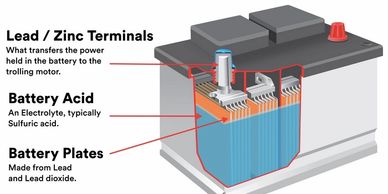Call Us To Reserve Your Custom Solar Install
Understanding Batteries
Discharging Batteries Completely
Discharging Batteries Completely
Discharging Batteries Completely
If you use all the energy that is stored in a traditional battery, you risk damaging the plates inside. The temperature will be significantly increased, meaning that the plates will lose their shape and their ability to store electricity.
Deep Cycle Batteries
Discharging Batteries Completely
Discharging Batteries Completely
A relatively newer and more powerful type of battery. Designed to be regularly, deeply discharged using most of its capacity (45%-75%). Recharge when battery is down to 55%-25%, waiting until this battery is down to, or below, 20% may cause damage and shorten overall battery life.
Flooded Lead Acid
These batteries are generation one, that is they came first. They come in an unsealed container, filled with acid and distilled water. They require frequent monitoring and maintenance, including checking water levels and topping off all compartments with distilled water if levels are low.
PROS: Affordable, easy to trouble shoot, produce high amounts of energy, durable
CONS: Requires frequent monitoring and maintenance, must be stored upright due to unsealed construction. Recommended depth of discharge 50%.
A.G.M.
Lithium-Ion
Stands for Absorbed Glass Mat. These batteries are constructed of a thin ultra-fine fiberglass mat sandwiched between plates that are saturated with battery acid to about 95% of what they can hold.
PROS: Fast charge, high output, very efficient, low heat emission, sealed container, vibration resistant, cold tolerant.
CONS: Heavy. Recommended depth of discharge 50%.
Lithium-Ion
Lithium-Ion
The newest in battery design with its electrode made of lightweight lithium and carbon. Lithium is a highly reactive element, meaning that a lot of energy can be stored in its atomic bonds; allowing a lot of energy to be stored in a small package.
PROS: The newest, most durable, lightest battery type with the best energy saving and energy output. Lifespan 8+ years. Up to 3,000 cycles. Can be discharged 100%, but not advised. For longest life, keep the batteries between 80-20% SOC, with a full recharge each month or week depending on how often they are being cycled. Lead acid recommended 50% depth of discharge.
CONS: Sensitive to high & low temperatures.
Copyright © 2018 ECO ETHIC SOLAR - All Rights Reserved.









